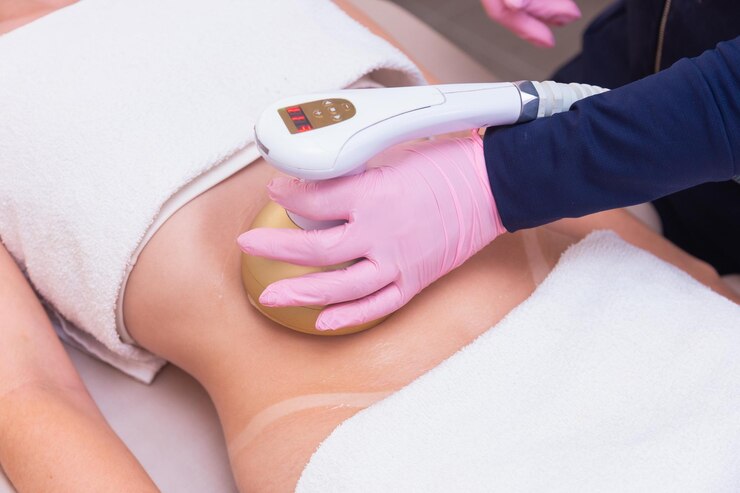Weight Loss: Why is it Difficult to Lose Thigh Fat?
Losing weight, especially when it comes to stubborn areas like thigh fat, can be a daunting endeavor. Despite dedicating time to exercise and adopting a healthy diet, many individuals struggle to see significant changes in their thigh region. In this article, we delve into the science behind Why is it Difficult to Lose Thigh Fat? and provide insights into practical strategies to overcome this challenge.

The Complexity of Thigh Fat: Thigh fat, particularly in women, can be particularly resistant to reduction due to its unique physiological and biological characteristics. The body’s natural inclination to store fat in the thighs, combined with hormonal influences, presents a challenge for those seeking to slim down this area.
Hormonal Influence: Hormones, particularly estrogen, play a significant role in the distribution of fat in the body. In women, estrogen promotes fat storage in the hips and thighs, which is essential for reproductive purposes. This hormonal influence makes thigh fat especially stubborn to lose.
Genetic Predisposition: Genetics also contribute to the difficulty of losing thigh fat. Some individuals may be genetically predisposed to store more fat in the thighs, making it challenging to achieve fat reduction in this area through exercise and diet alone.
Subcutaneous and Intramuscular Fat: Thigh fat comprises both subcutaneous fat (located just beneath the skin) and intramuscular fat (found within muscles). Subcutaneous fat, being closer to the surface, is more resistant to mobilization and reduction compared to visceral fat.
The Role of Beta Cells: The thigh region contains a higher concentration of beta cells, which are responsible for storing and releasing energy. These cells contribute to the persistence of fat in the area, making it resistant to loss.
Targeted Workouts and Diet for Thigh Fat Reduction: Tackling thigh fat requires a multifaceted approach that combines targeted workouts and a suitable diet plan. While spot reduction is challenging, focused exercises can help build lean muscle and promote overall fat loss.

Effective Strategies for Losing Inner Thigh Fat
Losing inner thigh fat may require some extra attention and effort, but with the right approach, it’s entirely achievable. If you’re determined to tone and trim your inner thighs, here are some valuable tips and strategies to guide you on your journey:
Combine Cardio and Strength Training: Incorporating a well-rounded fitness routine that includes both cardiovascular exercises and strength training is crucial for targeting and reducing inner thigh fat. Cardio exercises, such as running, cycling, or swimming, elevate your heart rate and help burn overall body fat. Meanwhile, strength training exercises like squats, lunges, and leg presses target the inner thigh muscles, helping to tone and define them. Pro Tip: Try interval training by alternating between bursts of high-intensity cardio and strength exercises to maximize calorie burn and fat loss.

Focus on a Balanced Diet: Your diet plays a significant role in your weight loss journey, including the reduction of inner thigh fat. Embrace a balanced diet that includes:
- Lean Proteins: Incorporate sources like chicken, turkey, fish, and plant-based proteins like beans and lentils.
- Whole Grains: Choose whole grains like quinoa, brown rice, and whole wheat bread over refined grains.
- Fruits and Vegetables: Load up on a variety of colorful fruits and vegetables for essential vitamins, minerals, and fiber.
- Healthy Fats: Opt for sources like avocados, nuts, seeds, and olive oil in moderation.
- Avoid processed foods, sugary snacks, and excessive calorie intake, as they can hinder your progress.
Stay Hydrated: Drinking an adequate amount of water throughout the day is not only essential for overall health but can also support your weight loss efforts. Water helps flush toxins from your body, aids digestion, and keeps your metabolism functioning optimally. Aim to drink at least 8 glasses (about 2 liters) of water daily.
Pro Tip: Start your day with a glass of water and carry a reusable water bottle to remind yourself to stay hydrated.
Prioritize Quality Sleep: Sufficient and restful sleep is often underestimated in its impact on weight loss. Poor sleep can disrupt hormones related to hunger and appetite, leading to unhealthy food cravings and weight gain. Aim for 7-9 hours of quality sleep each night to support your body’s natural metabolic processes.
Manage Stress Effectively: Chronic stress can have a detrimental effect on your weight loss journey. It triggers the release of cortisol, a hormone associated with weight gain, particularly in the abdominal area. Engage in stress-reducing activities such as:
Yoga: Practicing yoga promotes relaxation and reduces stress levels.
Meditation: Meditation can calm your mind and alleviate stress.
Hobbies: Engage in hobbies you enjoy, whether it’s reading, painting, or playing a musical instrument.
Conclusion
Losing thigh fat is a challenging but achievable goal. Understanding the unique characteristics of thigh fat and its relationship with genetics and hormones is crucial for developing effective strategies. By combining targeted exercises, a balanced diet, and a consistently healthy lifestyle, you can overcome the stubbornness of thigh fat and work towards achieving your desired results.












